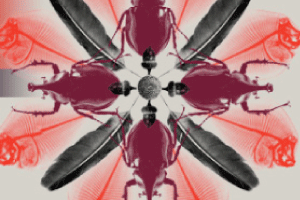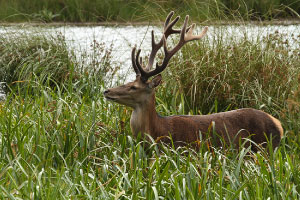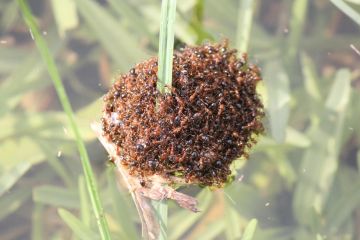 When quarantine fails and new invasive species enter Australia, state and territory governments and the community are left to pick up the pieces. So, state and territory governments have a big stake in improving the federal system.
When quarantine fails and new invasive species enter Australia, state and territory governments and the community are left to pick up the pieces. So, state and territory governments have a big stake in improving the federal system.
In a submission to the senate inquiry into environmental biosecurity, the Western Australian government says its priority is to ensure the federal government provides adequate resources to prevent incursions so as to limit the shift of costs to the state for managing more invasive species.
Five state governments made submissions to the inquiry, and four of them highlighted many of the same gaps and flaws that the Invasive Species Council did. None agreed with the submission by the federal agricultural department that biosecurity ‘risks to the environment and production are effectively managed’.
Disparities
Four submissions acknowledge disparities between environmental and agricultural biosecurity.
Biosecurity Tasmania says ‘environmental biosecurity threats have been poorly dealt with or not at all’ in Australia’s system, which has been ‘focused primarily’ on primary industries (even in that sector it says ‘there has been a bias towards commercial animal biosecurity threats’). Tasmania says there needs to be ‘national recognition that biosecurity threats against the environment are as important as primary industry threats’.
The South Australian government says a more consistent approach to environmental invasive species is needed, that the focus of the federally funded National Plant Health Surveillance program is ‘primarily on pests of primary production’, and that resourcing and capacity is stronger in agencies with primary production and health responsibilities than those focused on environmental protection.
NSW’s Office of Environment and Heritage (OEH) says Australia needs a more effective quarantine system for threats to the natural environment, including surveillance of key risk pathways and rapid response capability. These are ‘less developed’ for threats to the environment than for primary industries and health. There also needs to be ‘concerted efforts’ by the Australian government to engage environmental organisations in biosecurity arrangements, which have evolved largely from agricultural frameworks.
The Queensland government says the lack of methodology for assessing the costs of invasive species harming the natural environment reduces effective prioritisation of resources to these species compared to those affecting the economy.
Resources
Most state government submissions highlighted the need for more resources.
Biosecurity Tasmania says there ‘is a conflict in priorities with industry calling on government to invest strongly on issues that affect private interests’, which ‘can draw resources from the public good measures’. The South Australian government says there ‘should be a national cost and impact mitigation sharing process in place for those individuals, organisations and industry groups that create risks resulting in weeds and other environmental pests and diseases entering, emerging, establishing and spreading in Australia’. The NSW OEH says that ‘access to well-governed contingency funds is needed to allow early and adequate response to biosecurity threats where the benefit is primarily for the good of the public’.
Responses to incursions
There are several comments on the 2012 arrangements to respond to nationally significant environmental incursions (NEBRA).
The NSW OEH says its effectiveness should be assessed and improved, after the national response to the myrtle rust outbreak in 2010 – the ‘first substantive test’ of the arrangements for an outbreak with ‘predominantly environmental impacts’ – revealed problems. ‘Delays in decisions, uncertainty over funding and unclear responsibilities inhibited swift progress.’ One of the problems was that environmental stakeholders were not familiar with a biosecurity framework ‘owned’ and populated by agricultural biosecurity experts. Although the potential impacts of myrtle rust were understood well before it arrived in Australia, there had not been ‘proactive investments in prevention’. ‘The national accountability for such preventative work (where the impact is largely environmental) should be made clearer’.
The Queensland government is critical of several aspects of federal biosecurity that have led to multiple incursions of red imported fire ants. Despite a permanent surveillance workforce at the Port of Brisbane, the ants spread across 14,000 hectares prior to being detected, highlighting a lack of contingency planning and action for high priority pests. Risk pathways are changing and ‘these are not being identified and acted upon in a timely manner’.
The South Australian government urges continued funding for the program to eradicate red imported fire ants but the Western Australian government is refusing to contribute funds for the Southeast Queensland program while supporting eradication of the newest incursion around Gladstone. (Three months into the 2014-15 financial year no funds had been released under cost-sharing arrangement, inhibiting long-term planning and staff retention for this ten-year minimum eradication program.)
Risk assessments and priorities
Three government submissions comment on risk assessments. South Australia says that assessments for high priority organisms and pathways in the natural environment ‘tend to be done on an ad hoc basis’ and that priority risks to the environment should be identified and national contingency plans developed.
Queensland points out that plants and animals permitted entry into the country have generally ‘not been subject to the rigour of a regulated Import Risk Assessment (IRA) that allows or restricts other commodity’s entry into Australia’. The Tasmanian government recommends a higher priority focus on pathways than on individual high priority organisms because of uncertainties about the risks of establishment and impacts of environmental threats. It also thinks there should be ‘risk assessment in the release of new plant germplasm for agriculture and ornamental horticulture’.
There are several comments in submissions about the need for improved harmonisation. The Queensland government, for example, says there are opportunities to harmonise lists of pests and diseases of national, state and local concern and the processes by which organisms are assessed.
It is reassuring that state governments are, like the Invasive Species Council, calling for improvements in national biosecurity to protect the natural environment.
The state government submissions can be downloaded from the Senate inquiry’s website.




